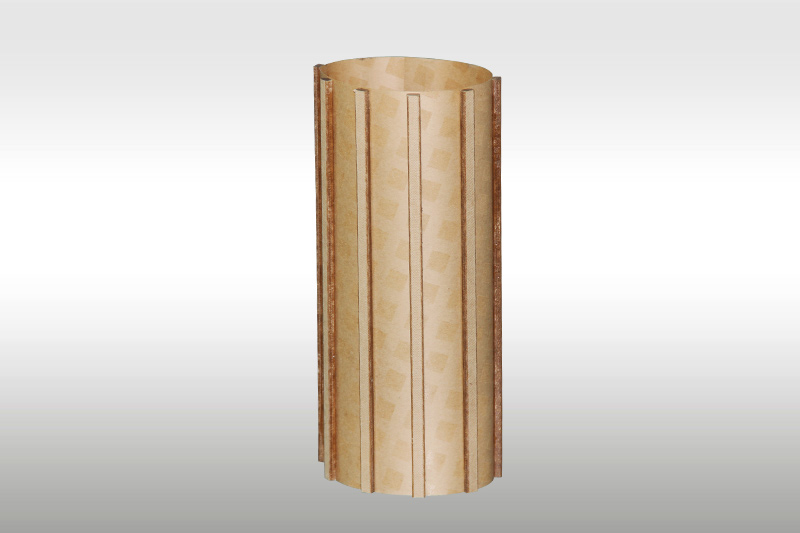G10 Glass Epoxy Composite: A Comprehensive Technical Overview
2024-08-15 16:10 | By: ZTELEC-www.ztelecgroup.com | 86click
Introduction to G10 Glass Epoxy Composite
1.G10 is a high-pressure fiberglass laminate, a type of composite material made from layers of glass cloth impregnated with an epoxy resin binder. The name "G10" comes from the military specifications it originally met, but the material has since become widely used in various industries due to its exceptional mechanical, thermal, and electrical properties.
G10 is known for its strength, durability, and resistance to moisture, chemicals, and electrical insulation, making it a preferred choice in demanding applications such as printed circuit boards (PCBs), mechanical components, and even in consumer products like knife handles and firearm grips.
2.Manufacturing Process of G10
The manufacturing process of G10 involves layering sheets of woven fiberglass cloth, which are then impregnated with epoxy resin. These layers are stacked together and subjected to high pressure and heat, typically in a hydraulic press. The result is a dense, strong, and uniform composite material that is both lightweight and incredibly tough.
The epoxy resin acts as a binder, holding the layers of fiberglass together and giving the material its distinctive properties. The high-pressure lamination process ensures that there are no voids or gaps between the layers, resulting in a material with excellent structural integrity.
3.Key Properties of G10 Glass Epoxy Composite
G10 offers a unique combination of properties that make it suitable for a wide range of applications:
High Mechanical Strength: G10 is known for its excellent strength-to-weight ratio. It can withstand significant mechanical stress without deforming or breaking, making it ideal for use in load-bearing components.
Electrical Insulation: One of the standout properties of G10 is its electrical insulation capability. It has a high dielectric strength, which means it can effectively prevent electrical currents from passing through, making it suitable for electrical insulation in high-voltage environments.
Thermal Stability: G10 maintains its properties over a wide temperature range. It is resistant to thermal degradation, which allows it to be used in applications that experience fluctuating or extreme temperatures.
Chemical Resistance: G10 is resistant to a wide range of chemicals, including acids, alkalis, and solvents. This makes it suitable for use in environments where exposure to corrosive substances is a concern.
Moisture Resistance: G10 has low water absorption, making it highly resistant to moisture. This property is crucial in applications where the material may be exposed to humid or wet conditions.
Dimensional Stability: G10 maintains its shape and size even under mechanical stress or varying environmental conditions. This stability is essential for precision components that require consistent performance.
Fire Retardancy: Although not inherently fire-resistant like some other materials, G10 has a degree of flame retardancy due to its epoxy resin content. It can resist ignition and help contain the spread of flames.
4.Applications of G10 Glass Epoxy Composite
Thanks to its robust properties, G10 is used in a wide array of applications across different industries:
Electronics Industry:
Printed Circuit Boards (PCBs): G10 is commonly used as a substrate for PCBs due to its electrical insulation, mechanical strength, and moisture resistance. It provides a stable base for electronic components, ensuring reliable performance over time.
Insulation Components: G10 is used to manufacture various electrical insulation components, such as terminal boards, washers, and spacers, that require high dielectric strength and thermal stability.
Aerospace and Defense:
Structural Components: G10 is used in the aerospace industry for structural components that need to be lightweight yet strong and resistant to harsh environmental conditions.
Firearm Grips and Handles: G10 is a popular material for firearm grips and knife handles due to its durability, resistance to impact, and ability to maintain grip in wet conditions.
Industrial Applications:
Mechanical Parts: G10 is used to fabricate gears, bushings, and other mechanical parts that require high wear resistance and strength.
Tooling and Fixtures: G10 is used in manufacturing fixtures and tooling components that need to withstand high pressures and temperatures without deforming.
Consumer Goods:
Knife Handles: G10 is a preferred material for high-end knife handles because of its strength, resistance to moisture, and ability to be textured for improved grip.
Outdoor Equipment: G10's durability and resistance to environmental factors make it suitable for outdoor equipment like tactical gear and camping tools.
Comparison with Other Composite Materials
G10 is often compared with other composite materials like FR4, Micarta, and carbon fiber.
tags:Lightning ProtectionOverload ProtectionShort Circuit Protectiontransformer safety10kV oil-immersed transformer
- more+releated article
- 2025-10-21Application of K Factor Transformer
- 2025-10-21Detailed explanation about transformer model w
- 2025-10-2010kV Oil-Immersed Transformer Safety: Lightnin
- 2025-10-20What are The Advantages of Phenolic Cotton Clo
- 2025-10-17Are Three-Phase Isolation Dry-Type Transformer
- 2025-10-17G10 Epoxy Sheet: Choosing the Right Specificat
- 2025-10-1610kV Oil-Immersed Transformer Operation Inspec
- 2025-10-163240-B Epoxy Phenolic Glass Fiber Cloth Lamina
- 2025-10-15G10 Epoxy Sheet: The Preferred Insulation Mate
- 2025-10-15Analysis of Energy-Saving and Noise Control Te





